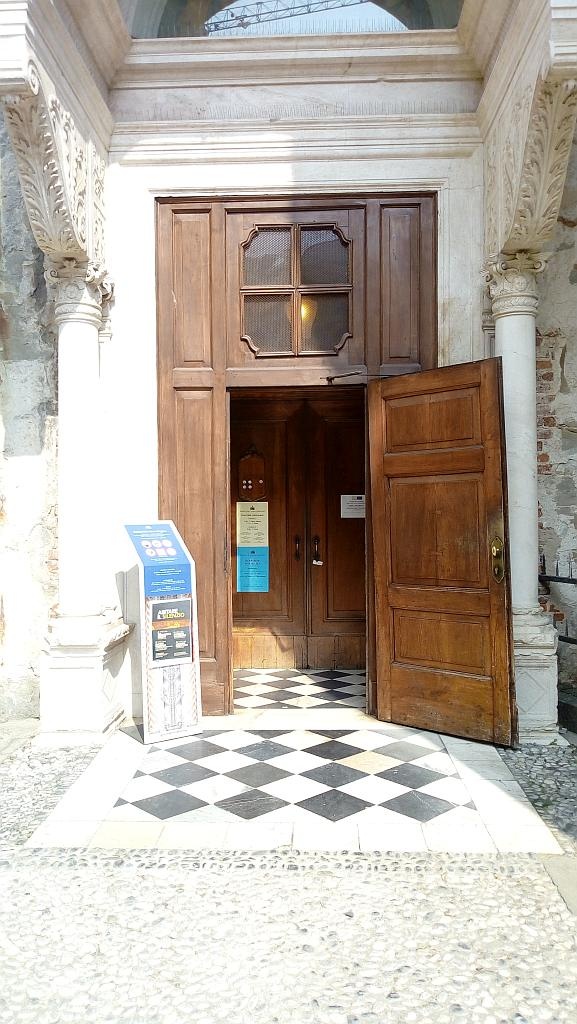There’s a deep and old connection between the city and Santa Maria Maggiore Basilica, maybe due to the peculiar circumstances of its construction. During the first years of 1100, a terrible plague breakout spread across Europe, causing death and desolation. That’s why the people of Bergamo decided to ask the Virgin Mary to assist them: they vowed to dedicate a church to Her if she had protected them from being infected. Being men of their word, in 1137 Bergamo’s citizens started to built the Santa Maria Maggiore Basilica on the Piazza del Duomo, in the Upper Town. They actually acted big: the church turned out to be really beautiful, and it was adorned even more in the following centuries. Frescoes, stuccos, tapestries and wooden marquetry designed by the renowned artist Lorenzo Lotto decorate the inside of the building.
Santa Maria Maggiore also houses the funerary monument dedicated to Gaetano Donizetti, the famous music composer, symbol and representative of Bergamo all over the world.
One of the most particular features of the church is the lack of a main entrance and of the façade, which used to form a single wall with the palace next to it. In fact, there are only side entries. At the base of the XIV Century prothyra columns by Giovanni da Campione, four red and white marble lions guard the Northern and the Southern entrances, unperturbed and majestic. On the northern side, the so-called Red Lions Portal overlooks the Piazza Duomo; the opposite side is located in Piazza Rosate, featuring the White Lions Portal. The type of marble gives the different colour: the Veronese one for the red lions and the Candoglia marble (from the Ossola Valley, Piedmont) for the white ones.
The place chosen to build the church wasn’t accidental: back in the Roman times, a temple dedicated to the Goddess Clemenza (“Mercy”) used to stand there, while in the VIII Century another church consecrated to the Virgin Mary was erected in the very same place.
Between the two portals on the north side, you can see the ancient measurements used in Bergamo during the Middle Age fixed on the wall: the Capitium Comunis Pergami (rod – 2,63 meters) and the Brachium (arm’s length – 53,1 cm), used as a point of reference by weavers and traders.
note: panels protecting Lotto’s wood inlays are only removed during public holidays or upon written request to MIA if it is needed.
The Santa Maria Maggiore Treasure
The volunteer members of the Touring Club Italiano welcome visitors every Saturday and Sunday from 2.30 to 5.30 pm.
There’s a deep and old connection between the city and Santa Maria Maggiore Basilica, maybe due to the peculiar circumstances of its construction. During the first years of 1100, a terrible plague breakout spread across Europe, causing death and desolation. That’s why the people of Bergamo decided to ask the Virgin Mary to assist them: they vowed to dedicate a church to Her if she had protected them from being infected. Being men of their word, in 1137 Bergamo’s citizens started to built the Santa Maria Maggiore Basilica on the Piazza del Duomo, in the Upper Town. They actually acted big: the church turned out to be really beautiful, and it was adorned even more in the following centuries. Frescoes, stuccos, tapestries and wooden marquetry designed by the renowned artist Lorenzo Lotto decorate the inside of the building.
Santa Maria Maggiore also houses the funerary monument dedicated to Gaetano Donizetti, the famous music composer, symbol and representative of Bergamo all over the world.
One of the most particular features of the church is the lack of a main entrance and of the façade, which used to form a single wall with the palace next to it. In fact, there are only side entries. At the base of the XIV Century prothyra columns by Giovanni da Campione, four red and white marble lions guard the Northern and the Southern entrances, unperturbed and majestic. On the northern side, the so-called Red Lions Portal overlooks the Piazza Duomo; the opposite side is located in Piazza Rosate, featuring the White Lions Portal. The type of marble gives the different colour: the Veronese one for the red lions and the Candoglia marble (from the Ossola Valley, Piedmont) for the white ones.
The place chosen to build the church wasn’t accidental: back in the Roman times, a temple dedicated to the Goddess Clemenza (“Mercy”) used to stand there, while in the VIII Century another church consecrated to the Virgin Mary was erected in the very same place.
Between the two portals on the north side, you can see the ancient measurements used in Bergamo during the Middle Age fixed on the wall: the Capitium Comunis Pergami (rod – 2,63 meters) and the Brachium (arm’s length – 53,1 cm), used as a point of reference by weavers and traders.
note: panels protecting Lotto’s wood inlays are only removed during public holidays or upon written request to MIA if it is needed.
The Santa Maria Maggiore Treasure
The volunteer members of the Touring Club Italiano welcome visitors every Saturday and Sunday from 2.30 to 5.30 pm.
Getting there
50 metres away (piazza Rosate): public parking reserved for residents, no reserved parking spaces and with cobbled paving. Possibility of requesting a permit from the local police). 300 metres away (Piazza Mercato del Fieno): 1 reserved parking space with cobbled paving.
280 metres away: Upper Town Funicular Station; one of the two cabins is accessible with a stair lift.
Footpath to the southern entrance (only one accessible): downhill (slope 7-8%) and difficult as it is necessary to cross the cobbled paved road without tactile ground surface indicators. The churchyard is also cobbled, but finer.
Entering
From south-west entrance (secondary gate always open): door is adequate is terms of width and level.
Visiting
Internal space is level and accessible except for the presbytery and choir preceded by 3 steps.
Visible works of art except those preserved in the Presbytery.
There are no measures for the visually impaired.
Using the bathroom
There are no bathrooms.
Synthetic evaluation
Person with motor disabilities: accessible with a companion.
Person with visual impairment: accessible with a companion.
Gallery
Parcheggio in piazza Mercato del Fieno
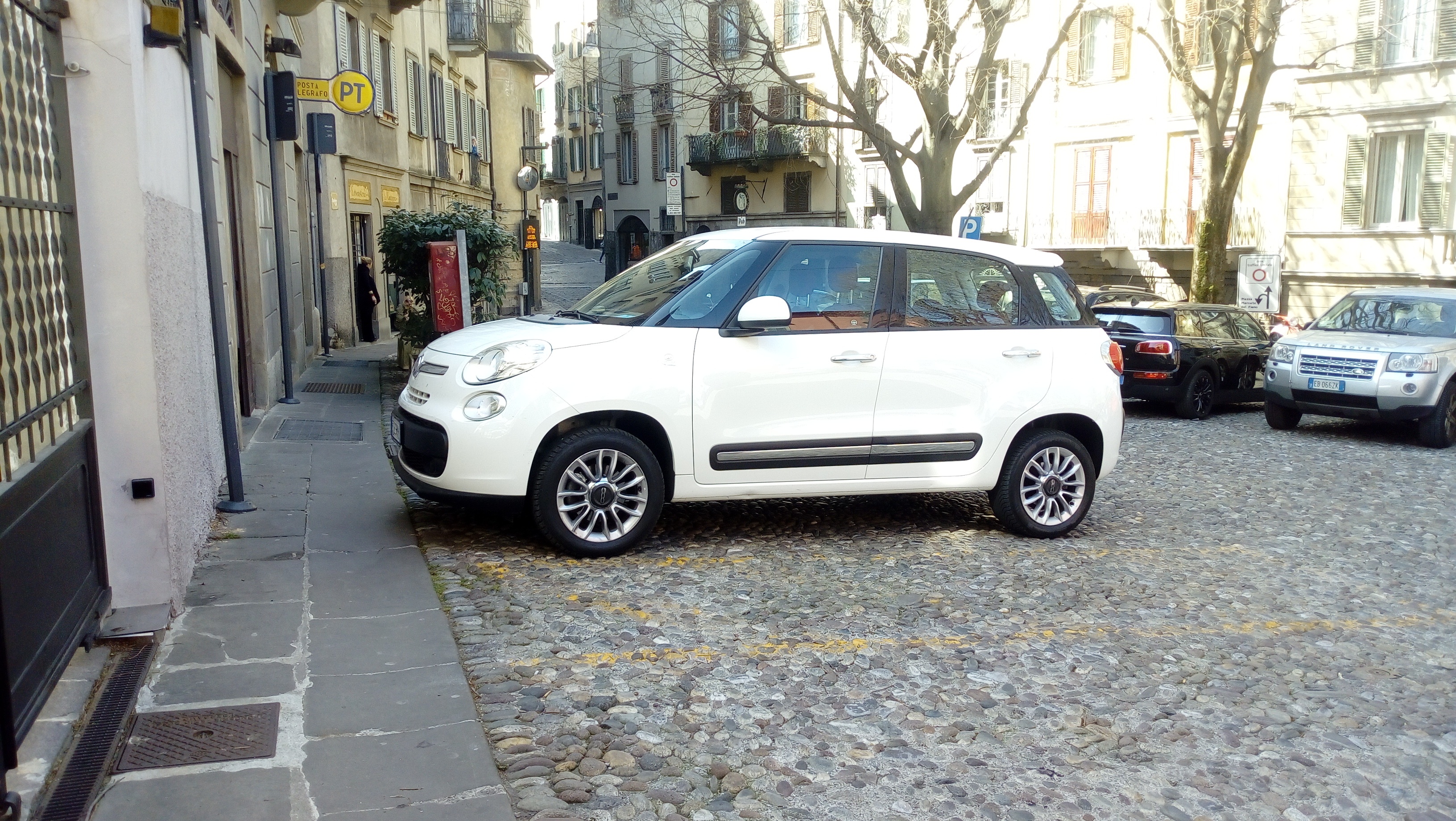
Percorso di avvicinamento in via Mario Lupo
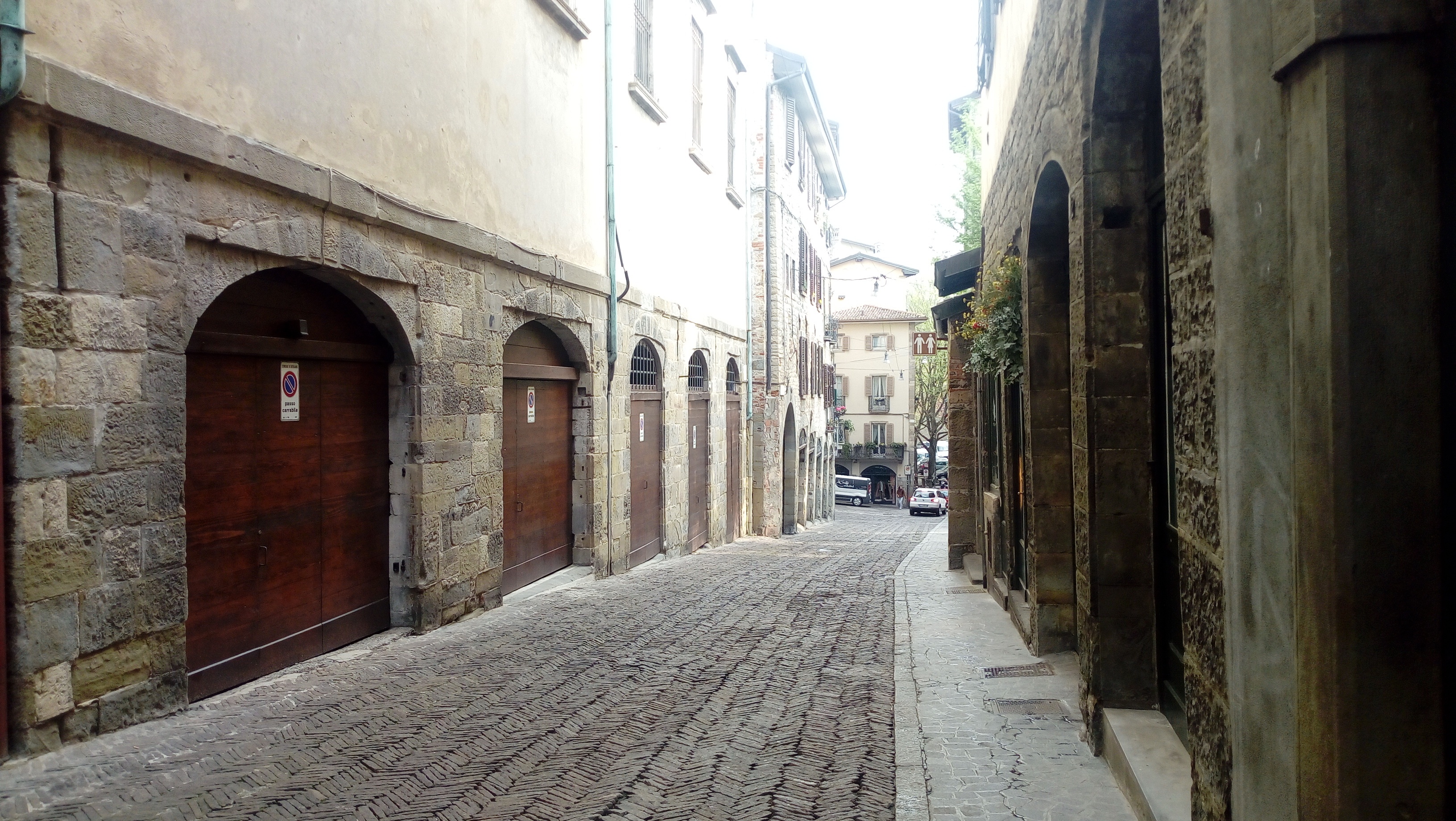
Percorso di avvicinamento
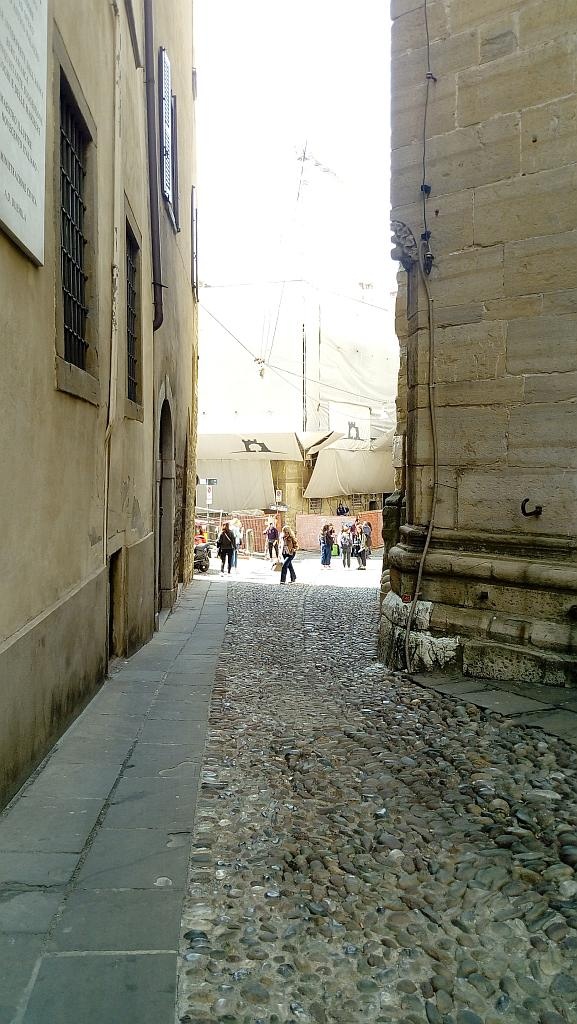
Percorso di avvicinamento - sagrato sud
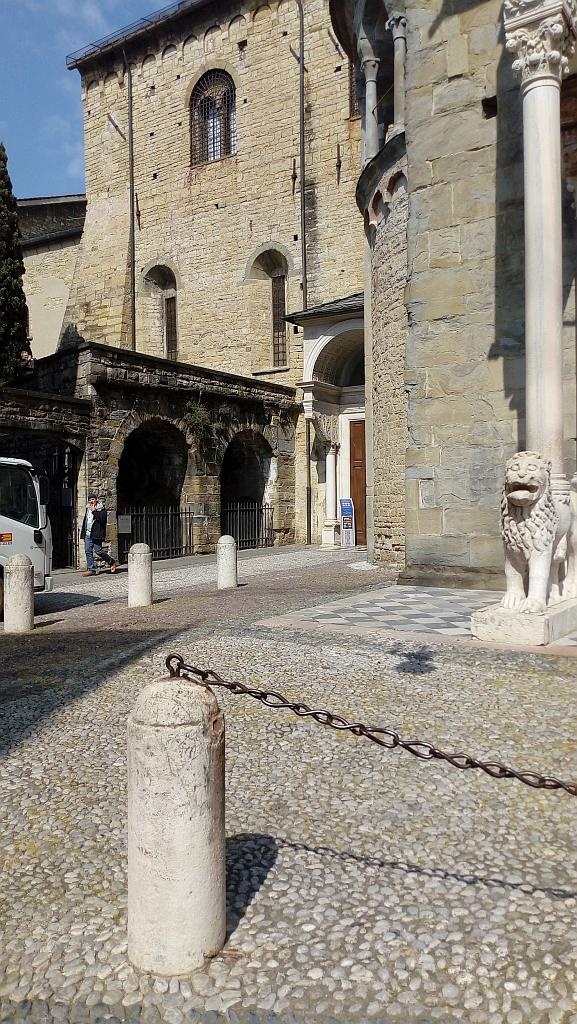
Ingresso laterale sud
